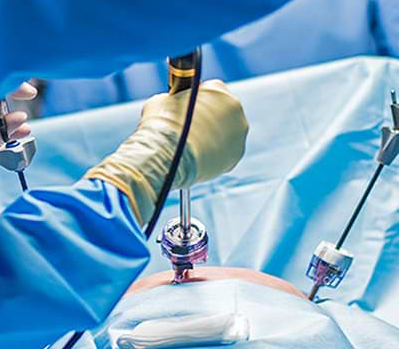What is Boari Flap Reconstruction? - Surgery, Procedure, Technique
Boari flap reconstruction is a surgical method used to treat 8-12 cm long ureteral segment abnormalities. The process has evolved from the traditional open-surgical approach to laparoscopic and, more recently, robotic surgery. There are three different methods for reimplanting the ureter: type 1 uses the psoas hitch, type 2 uses the bladder flap, and type 3 uses the Boari flap. A Boari flap may be required for reimplantation through the distal mid-ureter. The patient's preoperative bladder capacity determines the maximum length of the Boari flap.
The Boari flap is a useful repair technique that can bridge abnormalities of up to 12 to 15 centimeters in length. It is most successful for treating distal and middle ureteral strictures that are long. For ureteral reconstruction, minimally invasive techniques are frequently employed. Boari flap ureteral reimplantation using laparoscopic techniques has been performed by several surgeons.
Boari Flap Reconstruction Surgery Procedure
When the damaged ureteric segment is lengthy (more than 5 cm), a Boari bladder flap is one of the possibilities for ureteric reimplantation. The tubularization of a flap of bladder tissue that originates from ureteral tissue is required for this treatment, which can be carried out either through an open incision or a laparoscopic incision.
Boari flap reconstruction is a laparoscopic surgery used to replace a large portion of the ureter that has been broken or destroyed as a result of disease or trauma. The surgery entails separating a flap of bladder tissue and utilizing it to rebuild the ureter.

An abdominal incision is performed during the treatment to gain access to the bladder. A longitudinal incision is then made in the bladder wall, which mobilizes the bladder and produces a tissue flap. The flap is then stitched to the remaining healthy portion of the ureter to create a new, longer ureter.
A highly trained urologic surgeon with extensive experience in reconstructive urologic surgery is required to undertake a Boari flap reconstruction. The outcome of the procedure is contingent on a number of variables, including the severity of the ureteral injury, the surgeon's expertise, and the patient's overall health.
The patient may need to be closely monitored for many days following surgery. To aid in bladder drainage, they might also need to use a catheter for a while.
Boari Flap Reconstruction Technique
The ureter, which connects the kidneys to the bladder, can be reconstructed or repaired surgically using the Boari flap technique. A flap of tissue from the bladder or the ureter's wall is cut during the treatment, and it is then used to rebuild the ureter segment that has been injured or damaged.
Typically, the Boari flap technique is employed when a section of the ureter is injured or destroyed due to trauma, infection, or malignancy. The operation can also be performed to treat ureteral strictures and ectopic ureters, which are congenital malformations of the urinary tract.
The surgeon locates the injured ureter segment during the procedure after making an incision in the abdomen. A flap of bladder tissue or the ureteral wall is then made once the bladder is separated from the surrounding tissue. The remaining healthy section of the ureter is then stitched to the rotating flap.
The Boari flap technique is a difficult and sophisticated surgical treatment that calls for specific knowledge and skill. The surgery carries a number of risks, including bleeding, infection, ureteral stricture, and urine leakage.
 Reviewed by Simon Albert
on
February 25, 2023
Rating:
Reviewed by Simon Albert
on
February 25, 2023
Rating:











